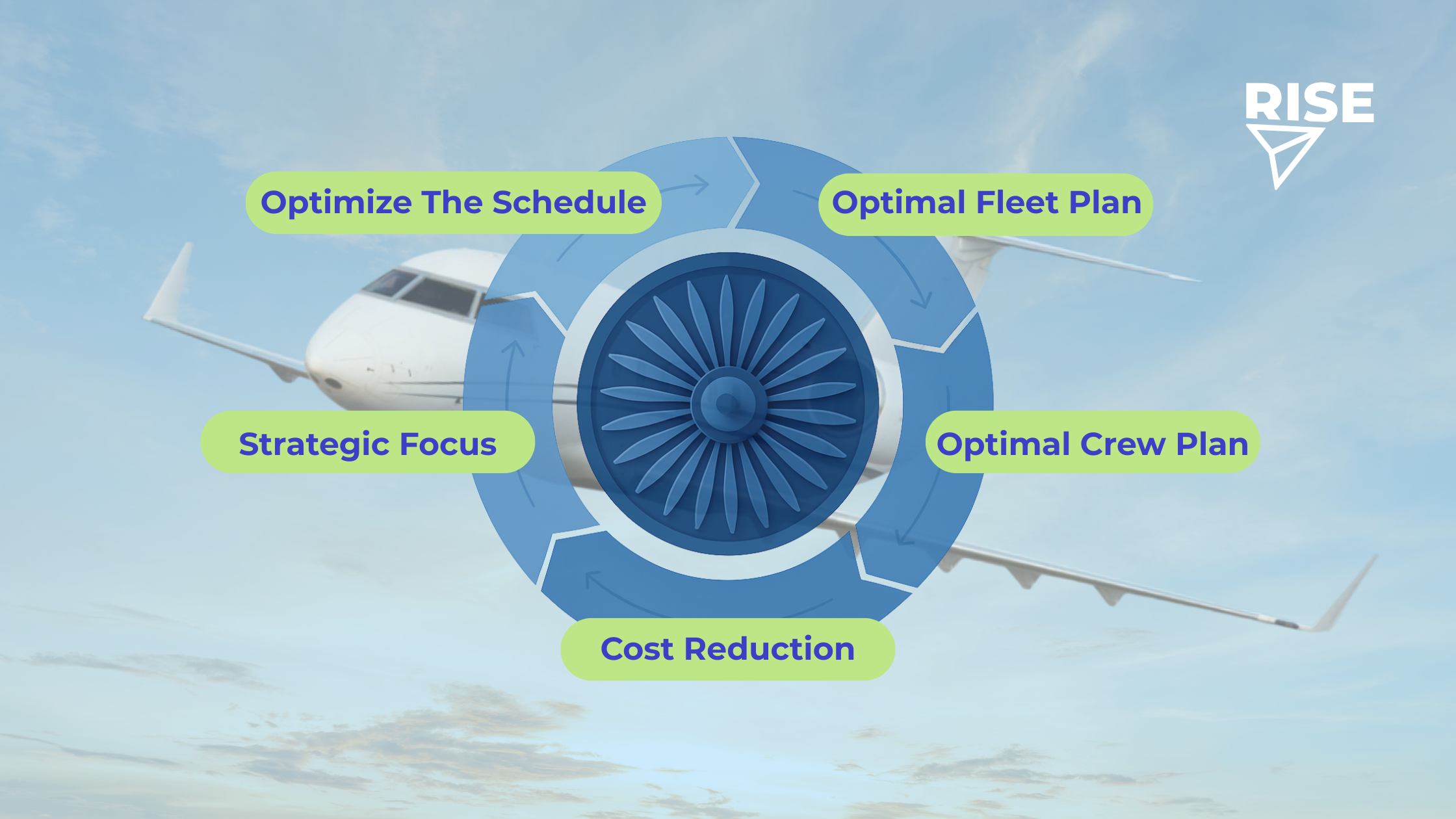In aviation, one of the most powerful entry points into that wheel is schedule optimization. Done right, it sets off a chain reaction that reaches every corner of an operation.
Every schedule is a decision about aircraft movement. Smarter schedules mean fewer positioning flights, better routing, and aircraft spending more time generating revenue. Fleet utilization rises, and downtime shrinks.
A well-positioned fleet only works with a qualified, rested crew attached to it. When schedules are optimized, crew planning follows naturally: fewer last-minute swaps, reduced fatigue risk, and smoother workflows overall. The human side of the operation works in sync with the fleet.
Efficient schedules cut costs on multiple fronts: less time spent on scheduling and rescheduling manually, fewer overnight stays for crew, and maintenance events are built into the plan instead of disrupting it. Costs shrink, margins grow.
When firefighting subsides, leadership can turn their attention back to the bigger picture. Teams stop reacting to problems and start shaping the strategy. That’s when optimization stops being a tool and becomes a culture.
Data from optimized operations feeds back into the system. Each cycle makes the wheel spin smoother, identifying new gains, preventing old mistakes, and building a compounding effect. Optimization doesn’t end, it feeds itself.

Think of optimization as the force that keeps the continuous improvement wheel moving. Once it’s in motion, every turn unlocks more efficiency, resilience, and value.
The question becomes: how fast you can keep it turning?